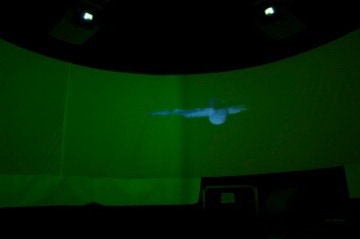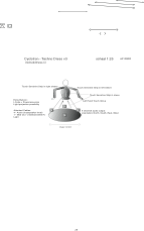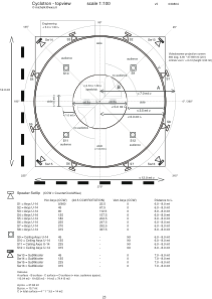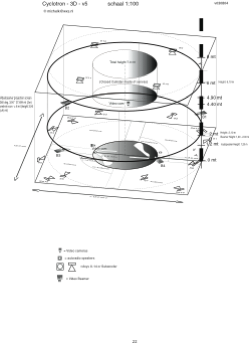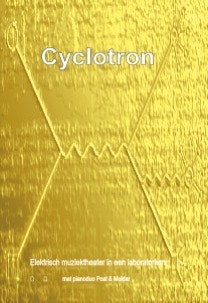Cyclotron - 2003/2006 - 62’00
A music theatre production for Computer and piano-duo.
Concept, Composition and software: Michèl Koenders.
Cyclotron. The cyclotron is a magnetic resonance accelerator, a particle accelerator developed in 1931 by Lawrence and Livingstone for imparting very great velocities to heavier nuclear particles without the necessity of excessive voltages. (Van Nostrand’s Scientific Encyclopaedia, third edition 1958) Collision. As used in Physics, this term refers to any interaction between particles, aggregates of particles, or rigid bodies in which they come near enough to exert a mutual influence, generally with exchange of energy. It does not necessarily imply actual contact. The process is always subject to conservation of momentum, and in an “elastic collision,” also to conservation of energy. In the latter case, if the initial velocities are given, the velocities of the bodies after collision can be calculated by applying these two conservation principles. The subject is of special significance in atomic physics, were a collision is defined as a close approach of two or more photons, particles, atoms or nuclei during which an interchange occurs of charge, energy, momentum or other quantities. (Van Nostrand’s Scientific Encyclopaedia, third edition 1958)
Cyclotron: A particle accelerator as music theatre.
In physics, much research has been done into the effect of collisions upon for example objects, particles and atoms. A machine devised to accelerate and cause collisions between very small particles is called a Cyclotron. Such a particle accelerator provides the model for this music theatre performance.
All recording, soundprocessing editing and postprocessing: Michèl Koenders.
